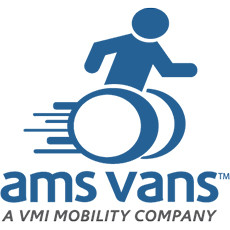Fun fact: DAF Day falls on the second Thursday of October each year!
If you’re new to the idea of a Donor Advised Fund or DAF, this blog will help you understand how DAFs work with input from our friends at Glenmede.
We are so grateful to Glenmede for their consistent support of our mission through sponsorships, including as Presenting Sponsor for our Live It Up! 2025 annual gala in October.
What is a Donor Advised Fund or DAF?
A Donor Advised Fund (DAF) is a giving pathway that allows you to make an irrevocable charitable contribution, generally receive an immediate tax deduction, and recommend grants from the fund over time.
DAF assets are owned and controlled by the DAF sponsor, which is an established charitable organization like Help Hope Live. For this reason, DAFs are easy to set up and often less costly to maintain than other giving options.
Why do people choose to use Donor Advised Funds or DAFs?
Here are 3 reasons why people may choose to use a DAF:
- DAFs offer a streamlined, cost-effective way to manage charitable giving without the administrative burden.
- They allow donors to remain anonymous if desired.
- Donors can support multiple organizations from a single account.
- DAFs are also a great way to teach the next generations in your family about philanthropy that is meaningful to you. The next generations can act as advisors or successors to the DAF, which is easy to work into an estate plan.
Are there tax benefits to a Donor Advised Fund or DAF?
Yes: typically, there is an immediate tax deduction for contributions to the DAF, even if grants will only be made to a charity or multiple causes in future years.
There is also tax-free growth of assets within the fund.
Using a bunching strategy, donors with a DAF can frontload their charity giving during a high-income year. As a result, they can maximize their tax deductions and distribute grants from the DAF over time instead of all at once.
As part of estate planning, a DAF can be your beneficiary in a will or trust. That can sometimes reduce estate taxes while ensuring a charitable legacy.
FAQs about Donor Advised Funds/DAFs
Q: When I designate a sponsoring organization for a DAF, is that organization permanently in charge of the funds I put into the DAF and grants made from the DAF?
A: Once assets are contributed to a DAF, the sponsoring organization assumes legal ownership and control over the assets. This is essential to allow for a charitable deduction.
That said, the donor and/or their designees retain advisory privileges with respect to the investment and distribution of the assets. DAF sponsors may allow donors to transfer DAF holdings to other sponsors.
Q: Can I change my sponsoring organization later?
A: Changing DAF sponsors is possible and entails a grant from one DAF sponsor to another. Many DAF sponsors allow such transfers but as with any grant, a transfer would be subject to the sponsor’s approval.
Q: When I recommend a grant from the DAF to go to an IRS-qualified charity, is there a guarantee that the grant will be made?
A: Grant recommendations are always advisory in nature but rarely rejected.
Sponsoring organizations typically review requests to ensure the recipient is an IRS-qualified public charity in good standing and that the grant is being made for a permissible purpose.
Some sponsors may have additional restrictions based on their mission or values—for example, religiously affiliated sponsors may limit grants to charities whose activities align with the sponsor’s religious values.
While a DAF sponsor cannot guarantee approval of a given grant recommendation, it would be unusual for a recommendation that is compliant with applicable legal and tax requirements to be rejected.
How can I set up a Donor Advised Fund or DAF?
Step 1: Choose a sponsoring organization.
You’ll want to select an established charity organization. Most DAF donors choose a community foundation, a faith-based charity, or a national nonprofit. Often, they will select an organization that has a pre-existing affiliation with a financial services firm.
Choosing a community foundation can help if you would like assistance tailoring your giving plans to your own community and region’s needs. Choosing a national organization is helpful if you’d like broader asset management capabilities and an established pathway for incorporating your DAF into a larger, overall financial plan.
Step 2: Make your initial contribution.
You can give to a DAF using cash, publicly traded securities, or even complex assets, including real estate or business interests.
Step 3: Select investment options.
Depending on your choice of sponsoring organization, you may have advisory privileges to weigh in on how funds in the DAF are invested.
Step 4: Recommend grants.
Once the DAF is established, you can recommend grants from the DAF to go to any IRS-qualified charity at any time.
What to Read Next
Learn how to include a charity you love in your will through our other blog post collaboration with Glenmede:










